Menu
You can manage your membership and billing method by clicking here
Terms of Service
Privacy Policy
Copyright © 2025 Office of Immigration Australia, a private company registered in Australia. All Rights Reserved.

Checking membership status...
 EXCLUSIVE MEMBERS ONLY ACCESS
EXCLUSIVE MEMBERS ONLY ACCESSTo access this month’s edition & Member’s only resources, enter your registered email address.



Exclusive Australian Immigration News, Updates & Opportunities
October 2024
This bulletin is for members only, and provides our members with month to month updates on Australian immigration policy changes and consequential opportunities. Opportunities are found via federal and state government policy shifts for the demand and supply for certain occupations.
This bulletin will keep you up to date so that you do not have to employ expensive immigration lawyers to provide you with monthly research.
October 2024 has arrived,
and for the first time in history,
Australia’s population officially surpasses 27 million,
with overseas migration driving 83% of population growth in the past year!
These new figures from the Australian Bureau of Statistics, showing that there are now more than 27 million people who call Australia home, with overseas migration contributing to the majority of growth, reveal that immigration into Australia remains turbo-charged!
Australia’s population growth continues to align with projections from the Centre for Population, which expects the population to exceed 28 million by 2026-27, and 30 million by 2031. Australia’s population has now effectively doubled since the mid-1970s!
In This Month’s Federal News: New data shows that New Zealanders are fleeing to Australia! A key reason for this migration is Australia’s unemployment rate of 4.2%, which is currently lower than New Zealand’s at 4.6%.
In other Federal News, Western Australia’s population is booming as migration has helped grow the state by 89,000 residents over the past year! WA’s population increase topped all other states – up 3.1 per cent to 2,951,600 – followed by Victoria which grew by 2.7 per cent, and Queensland, which grew by 2.5 per cent.
In This Month’s State News: Skilled workers residing offshore remain eligible to be considered for ALL State and Territory nominations! Please view the State Migration Section of this month’s bulletin for all State and Territory program updates and opportunities available!
In This Month’s Economic News: Several trade workers have broken the big taboo by revealing how much they’re getting paid and it’s shown the enormous salary spectrum in Australia’s building, construction and mining industries!
Also in this month’s bulletin we have a look at 9 charming small towns less than two hours from Sydney which offer a reprieve from city life with cosy markets, natural scenery, a slew of outdoor activities, excellent restaurants and stunning architecture!
In This Month’s Student News: The state of Victoria will reserve a quarter of its regional skilled work visas for international students who come to the state’s universities and TAFEs in a bid to lure them to the state.
Also in this month’s student news, we have a further look into the federal government’s new limit for international student enrollments for 2025!
All this and much more in the October issue of The Australian Immigration Bulletin! Let’s take a deeper look at what has happened so far and what is planned for the remainder of October 2024 in Australian Immigration, so that you can start planning!
All members now have FREE access to an online IELTS English Platform and course to practice, study and improve their English and IELTS score. The IELTS exam is one of the key recommended exams you will need to take in order to Apply for Skilled Migration to Australia and the better your results, the higher points you will get when submitting an expression of interest. The advanced English and IELTS platform will allow all members to practice Mock IELTS Exams, learn cutting edge tips and gain a greater understanding of how to achieve a Band 9+.
All members also have access to “ImmiConnect” which is now available in the member’s area. ImmiConnect is the Office of Immigration Australia’s Employer Sponsored program which allows overseas workers to receive job interview invitations from Australian employers, when job opportunities come available.
The program aims to bring globally mobile, highly-skilled and specialised individuals to Australia who can fill critical areas of need.
ImmiConnect is exclusive to active Australian Immigration Bulletin Members only. You must be a current Australian Immigration Bulletin Member to be eligible to receive job interview invitations.
So if you are interested in receiving these invitations, please sign up for FREE by Clicking “ImmiConnect” and adding your name and email address.

*2 WINNERS DRAWN EVERY MONTH:
Current Round: August 2024 – December 2024 (10 Winners/Prizes in total)
There is always a winner, and the next one could be you!
The winners of the October 2024 Immigration Prize Giveaway were drawn at 10am AEST on 1st October 2024.
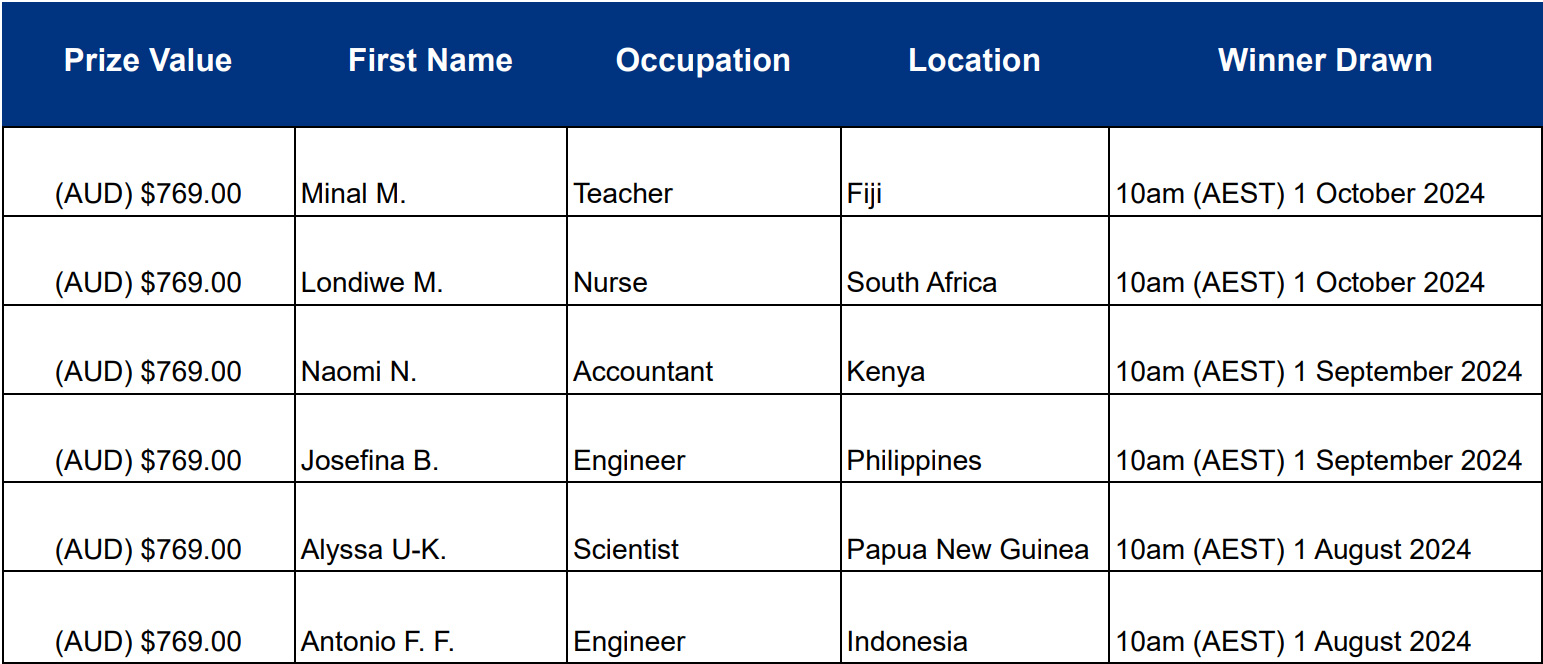
Congratulations to the October 2024 winners! You have been sent a confirmation email with details on how to claim your prize!
The next 2 lucky winners will be drawn at 10am AEST on 1st November 2024.
As of 6th July 2022, people entering Australia do NOT need to provide evidence of Covid-19 vaccination status. Additionally, people leaving Australia will NOT be asked to provide evidence of their vaccination status. Unvaccinated visa holders do NOT need a travel exemption to travel to Australia. It is however important to remember that airlines, vessel operators and other countries may have specific requirements that travellers need to comply with.
Please see the list of vaccines that are recognised by the Australian government for travel purposes here.
This Bulletin and its contents is for general information purposes only and should not be used as a substitute for consultation with professional advisors.
As legislation and travel requirements are constantly changing, we strongly recommend obtaining advice on your individual situation from a Registered Migration Agent.
Please click here to book a consultation with one of our Registered Australian Migration Agents, located in Australia.

Surfers Paradise, Queensland
The Results of the August 2021 census were made public on 12th July 2022, and revealed that Australia has become a majority migrant nation, as the census data shows for the first time that more than 50 per cent of residents were born overseas or have an immigrant parent. Last year’s census counted nearly 25.5 million people, including 1 million new residents.
Australia’s 2023-24 Migration Program has been carefully designed to boost the social and economic outcomes that meet Australia’s needs. In fact, the migration programme was first launched in 1945 following the aftermath of World War 2. Given this long history, it is worth understanding how it works. The Australian Immigration Bulletin exists to help explain this in more detail.
As we’ve entered the 10th month of the year, join us for a look at the latest news and developments in the world of Australian Immigration!

We spoke with Antony, a skilled migrant who has been working as an machine operator in the building and construction industry for the last 4 years.
How did you get started?
I initially was working in a different field and made a decision to get into civil construction because there were more jobs readily available.
The first thing you do is get a white card, which is the core course you do with a RTO, or registered training organisation, and that is issued by Safe Work Australia. It makes sure that you know the basics of safety on a construction site and building site, so you don’t get hurt or hurt anyone else.
After that, I applied for jobs as a labourer, just to get experience and contacts in the field.
Now I’ve worked my way up into operating machines and driving trucks. I’m licensed to operate excavators and rollers, trucks and other construction equipment.
What are the job trends in building and construction?
Right now, in Australia? It is unbelievable. There’s so much work in this field, we can’t get enough people.
How can migrant candidates be competitive?
In this field, it’s pretty much a level playing field, as long as you have the qualifications to do the job that you want to do.
Anyone can get a basic start as a labourer. And as long as you are hard working and show initiative, you can start to move your way up.
Some companies will help you to get more tickets, or licenses to operate machinery. Others wait for that, but for me personally, I didn’t wait on a company to do things for me. I saved my money and I did more courses and got my own tickets. And you don’t have to worry about money because it’s all tax refundable.

There are now more than 27 million people calling Australia home, with overseas migration contributing to the majority of growth, according to new figures from the Australian Bureau of Statistics (ABS).
In a statement released on Thursday 12th September 2024, the ABS reported the population reached 27.12 million by March 2024, representing a 2.3 per cent increase over the previous year.
Since 2007, it has grown on average by a million about every two-and-three-quarter years.
The 27 million milestone took just one-and-three-quarter years, which Phil Browning, the ABS demography director, said was “far quicker than the average”.
It was also quicker than population growth for the previous milestone of 25 million to 26 million, which took just shy of four years, from September 2018 to June 2022.
Beidar Cho, head of demography at the ABS, highlighted that net overseas migration was the primary driver of the increase, accounting for 83 per cent of the population growth. “Our population grew by 615,300 people over the year, with births and deaths, known as natural increase, making up the remaining 17 per cent,” Ms Cho said.
Net overseas migration contributed 509,800 people to Australia’s population in the year to March 2024.
Western Australia led the states with the fastest growth, seeing a 3.1 per cent rise in population, while Tasmania experienced the slowest growth at 0.4 per cent. Victoria’s population grew by 2.7 per cent, followed by Queensland at 2.5 per cent. New South Wales grew by 2 per cent, South Australia by 1.5 per cent, and the ACT by 1.8 per cent, while the Northern Territory increased by 0.8 per cent.
Australia’s population growth aligns with projections from the Centre for Population, which expects the population to exceed 28 million by 2026-27, and 30 million by 2031. The country’s population has effectively doubled since the mid-1970s.

This week, the Australian Bureau of Statistics released monthly net permanent and long-term arrivals data, which revealed that immigration into Australia remains turbo-charged.
The opposite is playing out across the pond in New Zealand, where immigration is easing rapidly amid a significant outflow of New Zealand residents to other nations, most notably Australia.
In the year to July 2024, 55,800 net New Zealand citizens left New Zealand, up from 37,700 net departures the previous year.
There was a provisional net migration loss of 27,200 people to Australia in the year ended December 2023. This was made up of 17,300 migrant arrivals from Australia to New Zealand, and 44,500 migrant departures from New Zealand to Australia.
In the year to December 2023, 54% of New Zealand citizen migrant departures were to Australia.
A key reason why Kiwis are fleeing to Australia is because our unemployment rate of 4,2% is currently below New Zealand’s at 4.6%:
The lower unemployment rate in Australia is a departure from the period between 2014 and 2018, when Australian unemployment was on average 0.7 percentage points higher than New Zealand’s.
New Zealand is also suffering from a deeper per capita recession than Australia.
Accordingly, Kiwis are pouring into Australia, offset by migrant arrivals from developing nations.

Western Australia may have grown by 89,000 residents over the past year – but without immigration, population growth would be at a crawl.
And bringing in workers from overseas to fill roles in traditionally male-dominated industries such as construction and mining may be behind a widening gender gap, with there currently about 12,434 more men than women in WA.
Australia’s population grew by 2.3 per cent to surpass 27 million people in March 2024, according to the latest figures released on Thursday 12th September 2024 by the Australian Bureau of Statistics.
WA’s population increase topped all other states – up 3.1 per cent to 2,951,600 – followed by Victoria which grew by 2.7 per cent, and Queensland, which grew by 2.5 per cent.
But WA’s population increase is strongly attributed to immigration, with statistics showing a severe decline in our “natural” growth.
Natural growth – the number of babies born less the numbers of deaths – saw the state population increase by 14,084 in 2023-24.
Interstate immigration contributed 10,039 people and overseas immigration 64,902.
Ten years ago, natural growth increased the population by 21,452, but by 2017-18 that number dropped to 19,851.
The sharpest decline came between 2021-22 and 2022-23, when natural growth dropped by 3763 to 14,113.
University of Western Australia social demographer Amanda Davies said natural growth decline in the COVID years had been expected, but its continued decline post-pandemic was concerning.
“The fact that there has been eight successive quarters of lower than expected children being born means it’s not an anomaly, it’s a trend.”
The statistics also show a returning trend in WA’s gender gap, with the number of men in the state slowly outgrowing the number of women.
In 2020, men only outnumbered women by 1801, but in the year to March 2024, that number had grown to 12,434.
“That increase is related to the migrant intake that we’re attracting … people are moving here for employment, and there’s a dominance of employment in traditional male sectors, as well as perhaps hiring practices,” Davies said.
“We can actually see that playing out in the demographics when you have large construction phases in mining sectors, you have that imbalance creeping in.”
However, the gap will most likely rebalance itself as it has in previous years, Davies said.
Overall, Australia’s population grew by 615,300 people with net overseas migration driving 83 per cent of the growth, while natural growth made up 17 per cent.
Natural increase was 105,500 people in the year ending March 2024, made up of 289,700 births and 184,200 deaths registered in Australia.
KPMG urban economist Terry Rawnsley said natural increase rate across Australia remained close to record highs with 105,400 over the past year.
But despite this, the number of births has stayed relatively low at 289,700, while deaths are on an upward trend, reaching 184,100.
“The rise in deaths is largely due to two factors, the ongoing effects of COVID-19 and the nation’s ageing population,” he said.
“While COVID-19 is no longer in the spotlight, it is still in the community and having a significant impact on death rates, particularly in more vulnerable older demographics.”
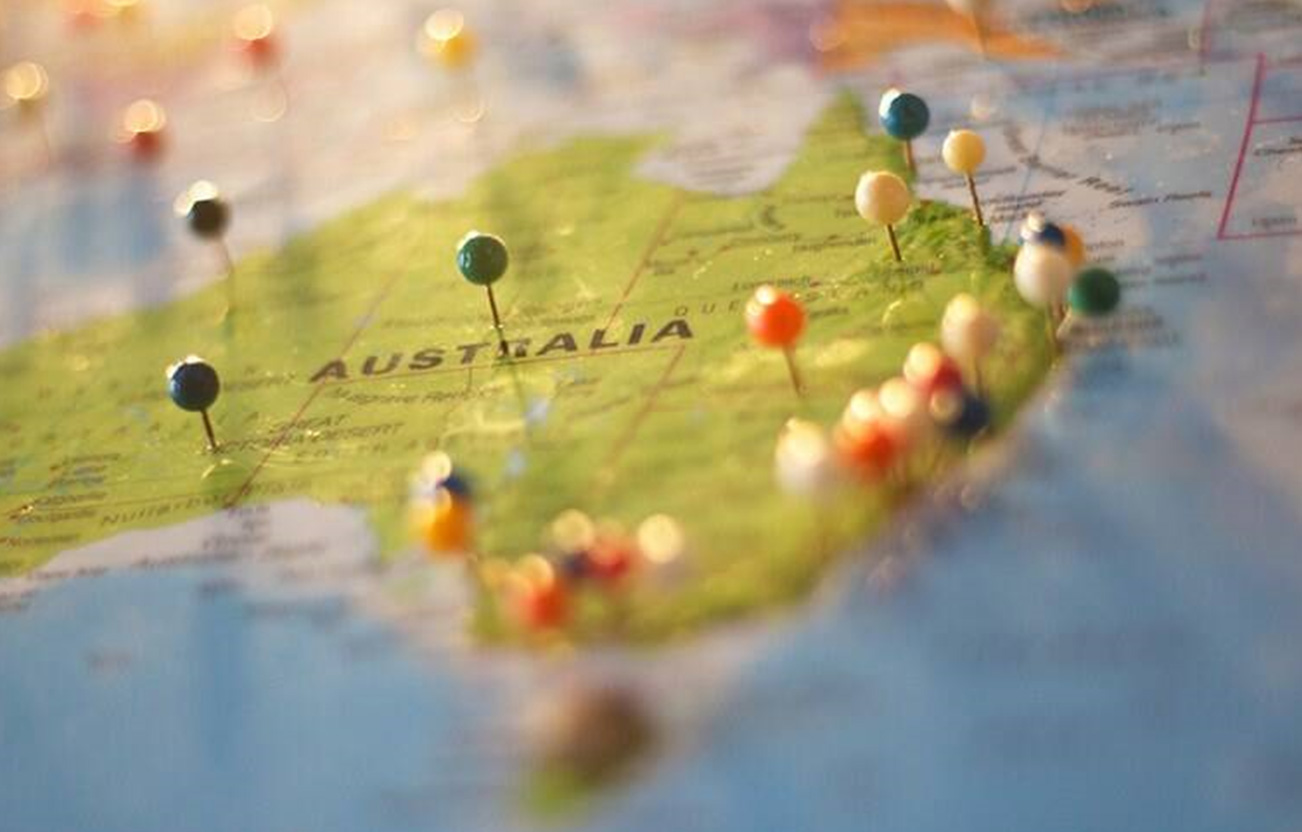
If you are interested in applying for a general skilled migration visa to Australia, it is important to have a good understanding of the skilled visa options and how the migration points test works, so that you can maximise your chances of being eligible to apply for a skilled visa.
A general skilled migration visa is an option available to skilled workers who are seeking to qualify for a skilled visa independently, or under a state or family sponsorship. It is an alternative to an employer sponsored visa.
One of the key criteria to qualify for a general skilled migration visa is the points test (a criterion that does not apply to employer sponsored visas). This is often the most challenging aspect for prospective skilled visa applicants to overcome when seeking an invitation to apply for the relevant skilled visa.
If you are considering applying for a general skilled migration program visa, an important concept to understand is the Expression Of Interest (EOI).
If you are considering applying for a general skilled migration visa, it is important to be aware that for certain visas in this visa class, you will first be required to lodge an EOI with the Department of Home Affairs (the Department) through SkillSelect. The EOI is not a visa application, but rather, it is the process by which you can express your interest in applying for the relevant skilled visa (It’s important to note, that there is NO fee to submit an EOI).
This requirement applies to the following skilled visa subclasses:
Let’s take a brief look at each of these visas below:
The ‘subclass 189’ is a federal sponsored visa that grants automatic permanent residence in Australia. It is subject to nil visa conditions or obligations. For this reason, it is often considered to be the most flexible of the skilled visa options available.
A subclass 189 points-based visa allows you to live and work in any state or territory permanently.
The ‘subclass 190’ is a state/ territory sponsored permanent residence visa. It is another points-based visa for which invitations are issued throughout each month by individual states and territories. One of the benefits of applying for state nomination is that you will be granted an additional 5 points.
An important aspect to consider, which does not apply to the subclass 189 visa is that there is an added step in the application process. In this case, you must also apply for nomination approval to a state or territory government. Only upon receipt of an invitation from the relevant state or territory to which you apply can you then apply to the Department for the visa itself.
Your obligations as a subclass 190 visa holder are that you must commit to your nominating jurisdiction’s obligations and commit to residing in your nominating State or Territory for two years from visa grant.
The ‘subclass 491’ is also a points-based state/ territory (or family) sponsored visa. It is a regional visa with a term of five years. The Department issues invitations for family sponsored EOI applications only (in invitation rounds). Invitations for state sponsorship are issued by individual states and territories throughout each month. This will grant you an additional 15 points for the nomination.
Being a provisional visa, this means it provides a pathway to permanent residence in Australia with the Subclass 191 Permanent Residence (Skilled Regional) visa, subject to meeting specified requirements.
Be mindful that as a subclass 491 visa holder, you must abide by visa condition 8579, which requires you to live, work and study in a designated regional area of Australia. For migration purposes, most locations of Australia outside of major cities (Sydney, Melbourne, Brisbane, Perth, etc.) are classed as regional areas.
If your EOI is successful, you will receive an invitation to apply for the visa, as specified in the invitation letter. This then enables you to proceed with lodgement of your visa application (provided you meet all other visa lodgement and visa grant requirements).
Please note, the below State and Territory program updates is a general overview only. It does not take into account any of your personal circumstances. You must check the State/Territory information carefully to ensure you can meet all the requirements for nomination.
Australia is currently facing a shortage of skilled migrants to fill workforce demands. In response, states and territories have been easing the conditions of their visa programs to help attract skilled workers from overseas.
Below is the monthly update for some of the State and Territory opportunities available.

Program Status Update
UPDATE: Northern Territory General Skilled Migration (GSM) nomination applications for 2024-25
Please note Migration NT is continuing to receive and assess onshore applications for nomination. Offshore applications will be reopened on Wednesday 14 August 2024 but only for the NT Family Stream and Job Offer Stream. Due to the significant volume of applications received to date, the Priority Occupations Stream will remain suspended for the time being. Existing offshore applications made under the Priority Occupations Stream will continue to be assessed. However, please note that there are likely to be significant delays in assessing these applications.
Once the above mentioned temporary suspension is lifted, you may be able to proceed with the NT’s usual skilled migration program. Program details below:
People residing offshore are eligible to be considered for Northern Territory (NT) nomination. Invitations to apply for Northern Territory nomination will be via the ranking system.
The ‘Northern Territory Offshore Migration Occupation List’ identifies the occupations in current demand in the Northern Territory. This List is important if you want to apply for Northern Territory nomination for either a:
The ‘Northern Territory Offshore Migration Occupation List’ is only applicable for those applying for NT nomination from outside Australia, under the Priority Occupation stream.
Please note: The Northern Territory government has advised that offshore applicants will generally only be offered a Northern Territory nomination for a subclass 491 visa. Subclass 190 nominations will only be offered in exceptional circumstances, such as cases where the applicant has strong connections to the NT.
The NT advises eligible applicants to apply as soon as they meet the eligibility criteria. To receive a nomination from the NT Government, you must:
Before submitting an EOI for The Northern Territory, applicants should check that they meet all eligibility requirements.
For a further explanation, see the Frequently Asked Questions page on the Northern Territory Government website.

Program Status Update
To manage Queensland’s COVID recovery response, applicants currently residing offshore are now able to apply.
Depending on your occupation and situation, there are two state nomination options available for skilled migrants through Queensland.
For Queensland state nomination, prospective applicants must meet the Department of Home Affairs requirements, state-specific occupation requirements and have skills in an occupation that is available on the Queensland Skilled Occupation List.
You may undertake employment once onshore in Queensland through:
Offshore applicants meeting the minimum published requirements are eligible to lodge an Expression of Interest (EOI) on SkillSelect and then a Registration of Interest (ROI) on the Migration Queensland portal.
Migration Queensland has opened the 2024-25 State Nominated Migration Program. For more information, please see here.
NOTE: To be eligible for Queensland’s 2024-25 program, your EOI must be submitted on or after 13 September 2024.
Migration Queensland criteria requires you to:
The 2024-25 Skilled Migration Program is open to both onshore and offshore applicants and provides pathways for skilled workers, graduates, and small business owners.
Before submitting a Registration of Interest (ROI) for Queensland, applicants should check that they meet all eligibility requirements.
Note: In the EOI, select ‘Queensland’ as the only state of interest in the EOI, if you wish to be considered for an invitation to apply for Queensland nomination.
For a further explanation, see the Frequently Asked Questions page on the Queensland Government website.

Program Status Update
Open to offshore applicants, the program provides skilled migrants with a pathway to permanent residency in Victoria. The skills that successful applicants bring to Victoria benefits employers and the broader Victorian economy.
The program provides two visa pathways:
As with previous years, applicants will first need to submit a Registration of Interest (ROI) and then be selected on competitive merit to apply for visa nomination.
To be invited to apply for Victorian skilled visa nomination, you must firstly make or update an Expression of Interest (EOI) via the Australian Government’s SkillSelect and then submit a Registration of Interest (ROI).
NOTE: If you previously submitted a ROI and wish to be considered for invitation in the 2024-25 program, you must submit a new ROI.
Both onshore and offshore applicants are eligible to submit a Registration of Interest (ROI) for both the subclass 190 and subclass 491 visas.
Your ROI will remain in the system for selection until it is withdrawn, selected or the program year ends.
Before submitting an ROI for Victoria, applicants should check that they meet all eligibility requirements.
For a further explanation, see the Frequently Asked Questions page on the Victoria Government website.
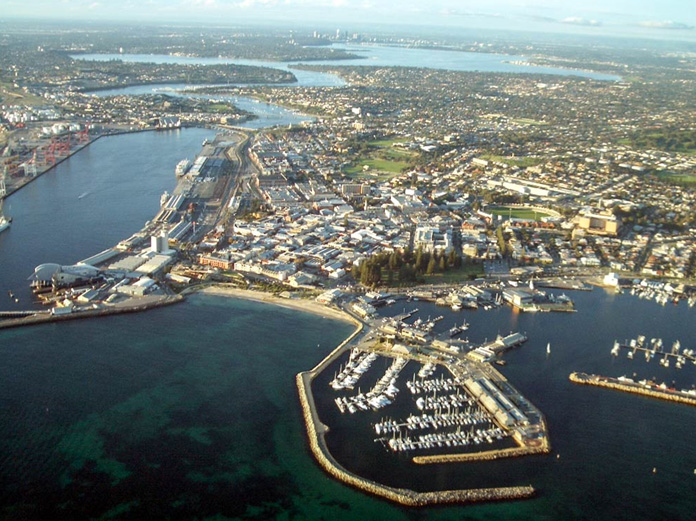
Program Status Update
People residing offshore are eligible to be considered for Western Australia (WA) State nomination. Invitations to apply for WA State nomination will be via the ranking system.
The Western Australian Skilled Migration Occupation List identifies the occupations in current demand in Western Australia. This List is important if you want to apply for Western Australia nomination for either a:
Please note that to be eligible for an invitation in the WA State Nominated Migration Program, you must meet both:
Before starting your application, you will need to check whether your occupation is available on either the WA Skilled migration occupation list (WASMOL) Schedule 1 or 2, or the Graduate occupation list. You can search for your occupation here. (The occupation list search bar is located under the heading ‘Eligible Occupations’.)
Features of the WA 2024-25 State Nominated Migration Program:
Before submitting an EOI for Western Australia, applicants should check that they meet all eligibility requirements.
For a further explanation, see the Frequently Asked Questions page on the Western Australia Government website.

Program Status Update
The ACT Critical Skills List identifies the occupations in current demand in the ACT. This List is important if you want to apply for ACT nomination for either a:
The ACT Government will update this list every four months to make sure that the ACT Skilled Migration Program adapts and responds to the evolving critical skills needs of the ACT economy.
The Canberra Matrix is weighted to ensure that applicants who will make a positive economic contribution to the Territory and/or have demonstrated a genuine commitment to the ACT are more likely to be ranked and invited to apply for ACT nomination.
*ACT nomination does not guarantee a migration outcome. You must still meet the Department of Home Affairs criteria.
Every month, a certain number of nomination invitations are available (prorated on the annual allocation) to those working in the highest ranked Matrix in each occupation.
You can view the ACT’s most in-demand skills for skilled migration by consulting the ACT Critical Skills List.
Before submitting an EOI for The Australian Capital Territory, applicants should check that they meet all eligibility requirements.
Once you’ve submitted a valid Department of Home Affairs Skill Select EOI, follow the ACT Government Process to apply for ACT nomination.
For a further explanation, see the Resources page on the ACT Government website.

Program Status Update
To manage South Australia’s COVID recovery response, applicants currently residing offshore are able to apply.
Depending on your occupation and situation, there are two state nomination options available for skilled migrants through South Australia.
For South Australian state nomination, prospective applicants must meet the Department of Home Affairs requirements, state-specific occupation requirements and have skills in an occupation that is available on the South Australian Skilled Occupation List. Offshore applicants meeting the minimum published requirements can now lodge an Expression of Interest (EOI).
There is an enormous range of occupations on South Australia’s Skilled Migration Occupation List in a range of industries – search for your occupation here.
South Australia will select offshore applicants to apply for state nomination from those who have submitted an Expression of Interest (EOI) through SkillSelect. Offshore applicants will not need to lodge a Registration of Interest (ROI) for this year’s program. South Australia will be nominating offshore applicants from over 250 occupations on South Australia’s Skilled Migration Occupation List.
If you are currently residing offshore and seeking to move to South Australia, the first step is to create an Expression of Interest (EOI) in SkillSelect ensuring you select South Australia as your first preferred State or Territory.
The South Australian Government can then review your EOI for consideration under the Skilled Nominated (Permanent) visa (subclass 190) or Skilled Work Regional (Provisional) visa (Subclass 491).
For most occupations, applicants must have a minimum of three years of skilled employment in their nominated or related occupation within the last 5 years to secure an invitation to apply for SA nomination.
South Australia will be assessing candidates on merit by the following factors:
For occupations in the construction trades (as listed here) applicants must have a minimum of one year of skilled employment in their nominated or related occupation within the last 3 years.
Applicants in the construction trades will be assessed on merit by the following factors:
Before submitting an EOI for South Australia, applicants should check that they meet all eligibility requirements.
For a further explanation, see the Frequently Asked Questions page on the South Australia Government website.

Program Status Update
Working in Tasmania
The two state nomination options available for skilled migrants through Tasmania are:
The Tasmanian State Nomination Skilled Migration Program supports Tasmanian businesses and increases the state’s working age population. It does this by attracting and retaining migrants with skills genuinely in need by employers, or with the capacity to settle in Tasmania through skilled employment in the long-term, and business activities that will increase employment opportunities.
Tasmania’s skilled migration program is for people wanting to move to the state who have skills that Tasmania need. Skilled migrants are attracted to Tasmania because of the state’s enviable lifestyle, career opportunities, affordable housing, reputable schools and a globally recognised university.
The Migration Tasmania Application Gateway is now available for registrations of interest (ROI) and applications for skilled visa nomination from Tasmania.
Anyone seeking Tasmanian nomination for a Subclass 190 Skilled Nominated Visa or Subclass 491 Skilled Work Regional Visa must first register in the Migration Tasmania Application Gateway .
Before submitting an ROI for Tasmania, applicants should check that they meet all eligibility requirements for either;
For a further explanation, see the Frequently Asked Questions page on the Tasmania Government website.

Program Status Update
The New South Wales government has invited applications from offshore migrants under the following nomination streams:
The NSW State Government announced that offshore applicants skilled in certain ANZSCO unit groups are eligible for NSW nomination.
*Please note: Invitation rounds occur frequently throughout the financial year with no set date.
NSW invites and nominates SkillSelect EOIs at the ANZSCO unit group level. To be eligible for NSW nomination (for either Subclass 190 or Subclass 491) you must be skilled in an occupation that both:
It is important to note that not all occupations within ANZSCO unit groups are eligible for the respective visa. It is the responsibility of the prospective migrant to ensure their occupation is eligible for the visa before obtaining a skills assessment.
Your EOI must be exclusively for the ‘Skilled Nominated visa (Subclass 190)’ or ‘Skilled Work Regional visa (subclass491)’ and seeking nomination from NSW only.
This means that if your Skillselect EOI has multiple visas and/or multiple states selected (this includes selecting ‘ANY’), your Skillselect EOI will not be considered for NSW nomination.
What are the NSW target sectors?
The NSW target sectors are specific industry sectors that have been identified by data research as having critical skills shortages in NSW. They include:
Although all validly submitted SkillSelect EOIs will be considered during an invitation round, priority is given to EOIs in these target sectors.
Is my occupation within a NSW target sector?
The NSW government cannot confirm whether individual occupations fall within NSW’s target sectors. So long as you maintain a validly submitted EOI in SkillSelect, your EOI will be considered in all future NSW invitation rounds.
Will NSW invite EOI’s in occupations outside of the NSW target sectors?
High-ranking EOIs in occupations outside of the NSW target sectors may be considered during invitation rounds; however, it’s crucial to understand that the odds of receiving an invitation are exceptionally low due to high demand and limited spots.
Before submitting an EOI for New South Wales, applicants should check that they meet all eligibility requirements for either;
For a further explanation of how the skills list works, see the Common questions about skilled visas page on the NSW Government website.
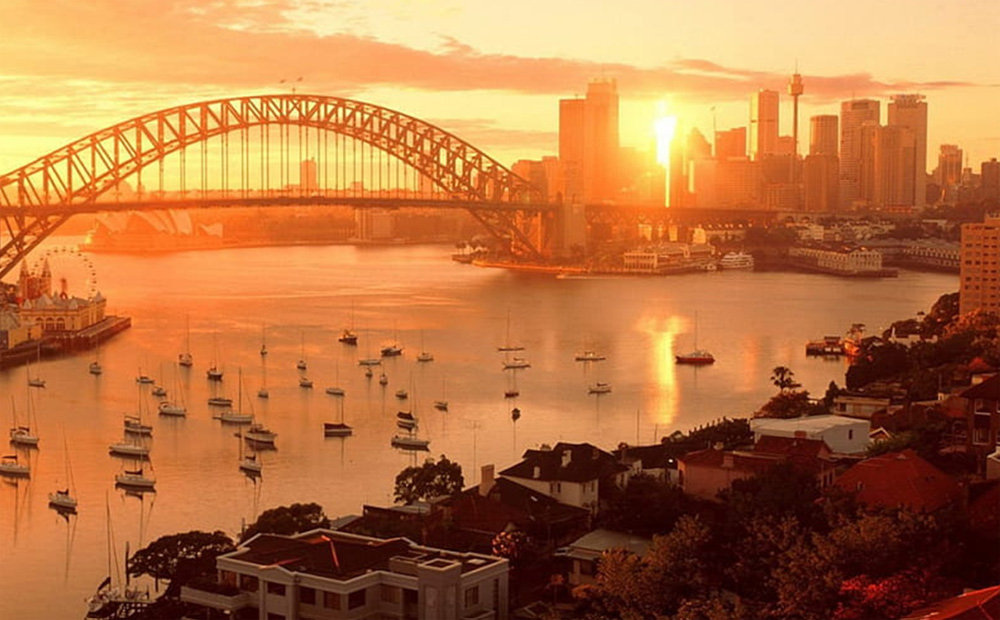
A year ago, at the start of the financial year, the panel of expert forecasters expected inflation and interest rates to be much higher than they are today.
Inflation was going to be 3.9%, not the present 3.6% and headed down, and the Reserve Bank’s cash rate was going to climb two times in the second half of 2023 from 4.1% to 4.5%. Instead it climbed once, to 4.35%, and hasn’t climbed since.
That’s something worth remembering when people tell you inflation is stubbornly high. It isn’t as stubbornly high as it was expected to be.
And a recession looks much less likely.
Back in mid-2023, when asked about the probability of a recession in the next two years, the expert panel’s average answer was 42%.
Asked when that recession was most likely to start, the panel’s average answer was December 2023.
So worried was the government over Christmas that it asked the treasury to come up with extra cost of living relief. What the treasury produced was a reworking of the Stage 3 cuts due to start in July.
The rejig doubled the tax cut set to go to Australians on average earnings and halved the tax cut set to go to Australians on more than A$200,000.
By the time the panel next assembled to examine the probability of a recession, in February, it had cut the likelihood to 20%, which is about the lowest average probability a recession ever gets in these sorts of surveys.
What’s gone right
What’s gone right is that inflation has proved easier to subdue than expected, and not only inflation in the price of goods, many of which are made overseas. Inflation in the price of services has been falling the entire financial year.
That good news has allowed the Reserve Bank to hold off on increasing interest rates all year.
Businesses attending the bank’s liaison meetings have told it they are “intensifying their focus on containing costs as they find it harder to increase prices”.
That’s because we are less likely to put up with higher prices. We have become “budget conscious” making it more difficult for firms to pass on cost increases.
All of this is bearing down on inflation.
Australia’s relatively-new monthly consumer price index is likely to show an increase when it is released. The annual rate of inflation might climb from 3.6% in April to 3.8% or even 4% in May.
Those are the headline AMP and Westpac forecasts. But they hide what the AMP and Westpac expect to happen beneath the surface.
The AMP expects prices to fall in the month of May, by 0.2%. Westpac expects no change, meaning a monthly inflation rate of zero.
The annual inflation rate is expected to climb because prices fell a year earlier in May 2023, not because they climbed in May 2024.
Lower inflation, and a tax cut
If the inflation rate does keep sinking when the official quarterly figures are next released, it’ll be doubly good news for stretched households. It’ll mean slower price rises, and probably an end to talk of further interest rate rises.
Along with the Stage 3 tax cuts legislated by then treasurer Scott Morrison way back in 2018 and due to hit pay packets in an amended form next week, they are set to make us feel better about the future.
The long-delayed tax cuts, which turn out to be timely in a way Morrison couldn’t have antipated, are worth about $2,200 per year for the average household according to calculations being circulated by Treasurer Jim Chalmers.
That’s $84 per fortnight, after tax. For a couple with two children, it’s almost $4,000, which is $150 per fortnight.
This month’s consumer survey recorded a slight uptick in confidence, of 1.7%.

“Depending on your experience, qualifications and contacts, you can be earning a lot of money.”
Several trade workers have revealed how much they’re getting paid and it’s revealed the enormous salary spectrum in the building, construction and mining industries. Some are pulling in below-average pay as they might have just graduated from their apprenticeships while others are earning the big bucks.
While blue-collar work has previously been overlooked as an area to make money, the tide is slowly turning. Recruitment expert Graham Wynn said that trades are a highway to retiring early.
“I tell any parents, ‘Get your kids into a trade’. That’s where the money is,” Wynn said. “A lot of these guys start their own businesses further down the track and, by the time they are 50, they are retired.”
$1,100 per week working in glass
One of the tradies who spoke to jobs app GetAhead revealed he was pulling in about $1,100 per week as a glass worker, which equates to about $57,200 a year.
The tradie said it can be a fairly stressful job because the main material he’s working with day-in and day-out can be very fragile.
“Glass is glass, bro,” he said, before being asked what happens if he accidentally cuts himself. “Oh, just keep working. I literally just kept working.”
The glass worker said there’s a fork in the road if he wants to pursue this line of work, which is doing an apprenticeship to become a glazier, who traditionally handles the installation of glass, or he can go further into the glass cutting side where he’d learn how to work industrial cutting machines.
Nearly $300,000 in the mines
There is no shortage of stories from people who got into the mining industry and started earning huge amounts of money.
But one bloke revealed how he’s managing to pull in nearly $300,000 per year.
The underground coal miner said he “works for himself” and added that “anyone can do it”.
He first got into the industry at just 17 years old and revealed his whole family had been working in the mines as well. While he said virtually any Aussie can sign up to the job, he admitted it’s not for everyone.
“I don’t get scared but there are other people that have come down for the first time and wanted to get straight back out because they couldn’t handle it,” he said. “It is a dangerous job.”
Minimum $72,800 as a traffic controller
There has been a lot of noise this year about how much traffic controllers get paid.
One tradie said he was pulling in $35 per hour to ensure the roads around the construction site were safe for workers, pedestrians, cyclists and motorists.
“Anyone who wants a sort of bludge job where you don’t have to do much – traffic control is definitely the way to go,” he said.
“You literally get paid to stand here and apart from that there are definitely worse gigs out there.”
His hourly rate works out to be about $72,800 per year based on an eight-hour daytime shift. The pay can go up substantially if you’re working overtime or overnight.
Abseiler earning $4,000 per week
If you’re not afraid of heights and are a night owl then you can be earning up to $4,000 per week or about $208,000 per year.
That’s what one abseiler said he was pulling in doing overnight shifts in Brisbane.
When he works during the day, his pay is “obviously” less than that staggering amount but it’s still very decent.
“I got sick of working in a shed, working on boats and stuff,” he said when asked how he got into the job. “Hated it… Going to the same place. [But now] every day you’re outside, you get to do what you love.”
The tradie said all that was needed to get into the profession was a five-day course and he was able to start going up and down the outside of buildings, where he’s responsible for glazing, cladding, concrete work and other tasks.
Crane operator making more than $200,000
While pulling in a healthy $200,000 every year might sound good, a crane operator opened up about the downsides of the job.
To earn that much money, he said he was working between 40 to 70 hours a week.
When asked about the work-life balance, he admitted it was “hard on the family”.
“There’s gotta be a lot of compromise with the family, for sure,” he explained.
Not only that, but the job sounds fairly dangerous as he’s had some “pretty close calls” while on a site.
He got into the industry because he “loves being outside” and was interested in cranes, so he followed his passion.
Despite the time away from his family and the risks attached to the job, he encouraged others to consider applying.
“Yeah, it’s worthwhile, definitely worth doing,” he said. “It’s a great industry to be in, especially construction. Yeah, loving it.”

These picturesque towns close to Sydney offer a reprieve from city life with cosy markets, a slew of outdoor activities, excellent restaurants and stunning architecture.
NSW is dotted with several picture-perfect towns with miles of rolling hills, lush forests, cascading waterfalls and spectacular beaches. These small towns offer unique experiences and natural scenery perfect for all types of travellers. Resisting the pace and bustle of their metropolitan counterparts, you’ll get everything at these quaint spots from cobblestone streets and vintage shops to well loved wineries and more. If you’re looking to get out of the city, add these small towns just under two hours from Sydney to your list.

Berrima is considered Australia’s best-preserved village from the 1800s with plenty of old-school buildings and shops that are still standing. Take a step back in time and enjoy a moment of pause at this idyllic spot within easy reach of the city. The Berrima Heritage Walk will take you through the town’s history from the 1830s. As you saunter along Berrima’s main street, you’ll find a number of quaint cafés, antique shops and bakeries lined throughout the historic village. Other must-do activities include the Berrima River Walk where you can spot a platypus or two and the heritage Courthouse Museum.
If your idea of an ideal weekend includes a book, a cosy corner and a drink, make sure to stop by Berkelouw Book Barn. At the century-old bookhouse, you’ll find many literary treasures and a quiet space all to yourself. It also doubles up as a winery which is a plus.

Berry has been named NSW’s best Small Tourism Town and it’s a fail-safe weekend getaway from Sydney with plenty on offer. Located in the Shoalhaven region of the NSW South Coast, Berry provides visitors with a little bit of everything along with a tight-knit community atmosphere. Head to the Berry Historic Museum and learn more about the town’s history or browse for souvenirs in one of its many heritage shops. Spend a lazy afternoon at The Berry Tea Shop or indulge your sweet tooth at The Treat Factory. A visit to Berry is incomplete without a stop at its iconic Donut Van which serves delicious cinnamon-spiced donuts and coffee.
Don’t forget to make a pitstop at the The Berry Markets, famous for their local produce, flowers, breads and cheeses.

If you can’t get enough of Bridgerton, you’ll want to plan a trip to Bowral ASAP. The picture-perfect town could be from the Regency era and offers exceptionally Instagrammable cafés, cool-climate wineries and excellent boutique shops. Find your next read at Plantation along with brunch or enjoy high tea at Your Vintage Occasion — a cafe plus vintage emporium and antique market. Lookouts and walking trails at Mount Gibraltar Reserve, Corbett Gardens and a picnic at Cherry Tree Walk are also worth exploring.

Located 29 kilometres southwest of Cessnock, Wollombi might be the Hunter Valley’s best-kept secret. The historic town is a maze of well-preserved streets, pretty cottages and fine country pubs. The town will also throw you back to the 19th century with its magnificent architecture. Head to St Michael’s Church, St John’s Church and the Wollombi Endeavour Museum for a little glimpse of the past. If you’re visiting Australia’s oldest wine region, make sure to stop by its many wine shops.
The Undercliff Winery comes highly recommended for some of the best wine tastings in the region. If you’re visiting around Easter, make sure to stick around for the Wollombi markets, popular for their cheese, jams, breads and of course, wine.

Leura is a small town just east of Katoomba and is often hailed as the ‘jewel in the crown’ of the Blue Mountains. The town offers a wide range of indoor and outdoor attractions to choose from. Head for brunch to the Instagram-famous Sorensen’s Glasshouse or get your fill of Mediterranean cuisine at Leura Garage.
Take a leisurely stroll down the expansive Everglades Gardens which beautifully blend the Australian bush with European-style landscapes or just walk around taking in the sights. Some lookouts and walks to add to your list: Leura Cascades, Gordon Falls, Leura Forest, Sublime Point and Jamison Lookout. There are heaps of warm and pleasant cafes lining the main street and a distinct Edwardian-style charm to the village.

The drive to St Albans is as pretty as the town itself. Passing through the outer suburb of Dural, you’ll travel along the Old Northern Road to the village. Here you can have lunch at the delightful Settlers Arms Inn, nestled between mountains and valleys, it serves both amazing pub grub and genuinely great views. The Maltings Mall offers plenty of theatre, entertainment and dining options. Water enthusiasts will want to add Stanborough Lakes to their list for sailing, rowing, and other activities, a beautiful 126-acre countryside park with two lakes.
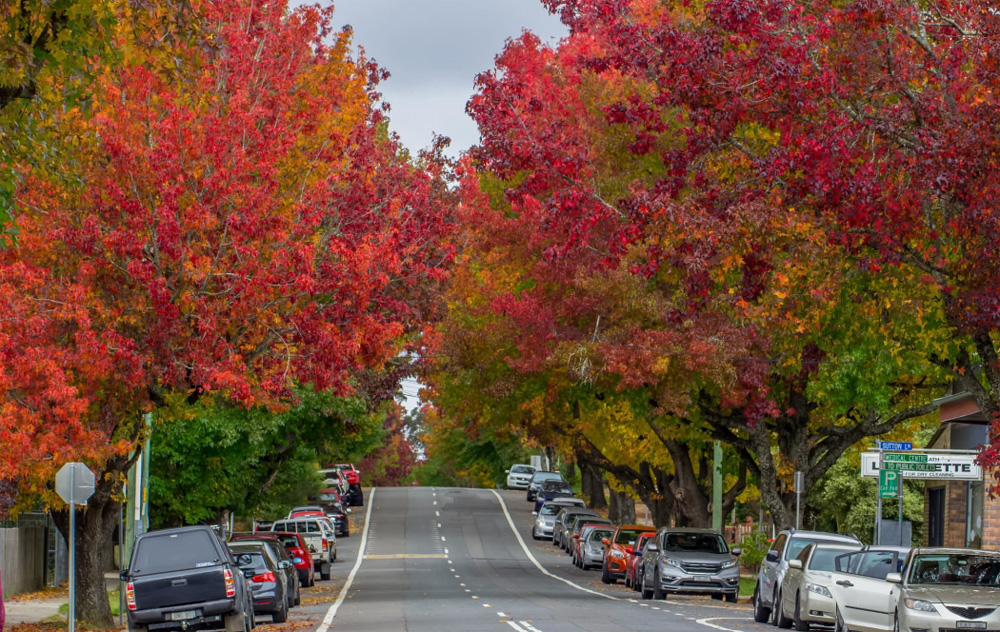
The quiet town of Blackheath is another gem in the Blue Mountains which is especially lovely during spring and autumn. And all the best things in the village are free. Anchored by stunning lookouts, from Govetts Leap to Anvil Rock, Blackheath is the place to be for those who love being out amongst nature. Lined along its beautiful streets are a number of cafes and galleries and the village also offers a great local shopping scene. The Grand Canyon Track is an excellent bushwalk to add to your list with rainforests, glow worms and waterfalls.

Mittagong is a relatively underrated destination compared to the likes of Berry and Bowral but it’s one of our favourite small-town escapes in NSW. The heritage town is packed with sandstone cottages, lovely walking trails, local art galleries and very good wineries. Check out the Box Vale Walking track that follows a historic railway line out the back of Mittagong, discover the many heritage buildings splattered around town, or explore local art at Sturt Gallery.

While there’s no shortage of stunning beaches in Sydney, if you’re looking to get away from the maddening crowds, Terrigal on the Central Coast is an easily accessible town to visit from Sydney. Expect sandy beaches, exciting nightlife and plenty of underwater adventures. Check out the picturesque Terrigal Beach, the Terrigal Haven, a small, sheltered cove across the main beach and its local markets by the beach. Also recommended is The Skillion, a local landmark with spectacular, gold-from-the-sun views of the town. The Avoca Beach Theatre built in 1951 and famous for its old-world charm is also a must-visit.

Many Australians have a migration story. Somewhere in our family tree is an ancestor who embarked on a long and difficult journey and eventually made it to Australia.
Hopes and Fears: Australian Migration Stories celebrates the people who have made those journeys.
Our ancestors might have been a convict, a sailor or a soldier. Perhaps a young woman sent from a workhouse, or a child migrant from an orphanage.
Some came to exploit the opportunities of empire, in search of land and gold. Some were brought in as indentured labourers to work on plantations in the tropical north. Others were refugees fleeing war and political prosecution, or workers seeking a more secure future.
Coming from all parts of the globe, these migrants have helped to make Australia one of the most diverse nations in the world.
But it has not been without its challenges. The desire for particular migrants to populate this continent is entangled with legislation restricting particular immigrants as well as First Nations struggle to continue living on unceded lands.
The National Library of Australia is a place where migration stories can be found and retold for future generations.
The books, magazines, paintings, ephemera, documents, letters, drawings and photographs held by the Library provide a storehouse of memories for all Australians to cherish.
The exhibition runs from 26 July 2024 to 2 February 2025 and is exclusive to Canberra.
The Details
What: Exhibition – Hopes and Fears: Australian Migration Stories
When: Friday, 26 July 2024 to Sunday, 2 February 2025
Where: Exhibition Gallery, National Library of Australia (Parkes Place – Canberra ACT 2600)
Cost: Free entry, no booking required.
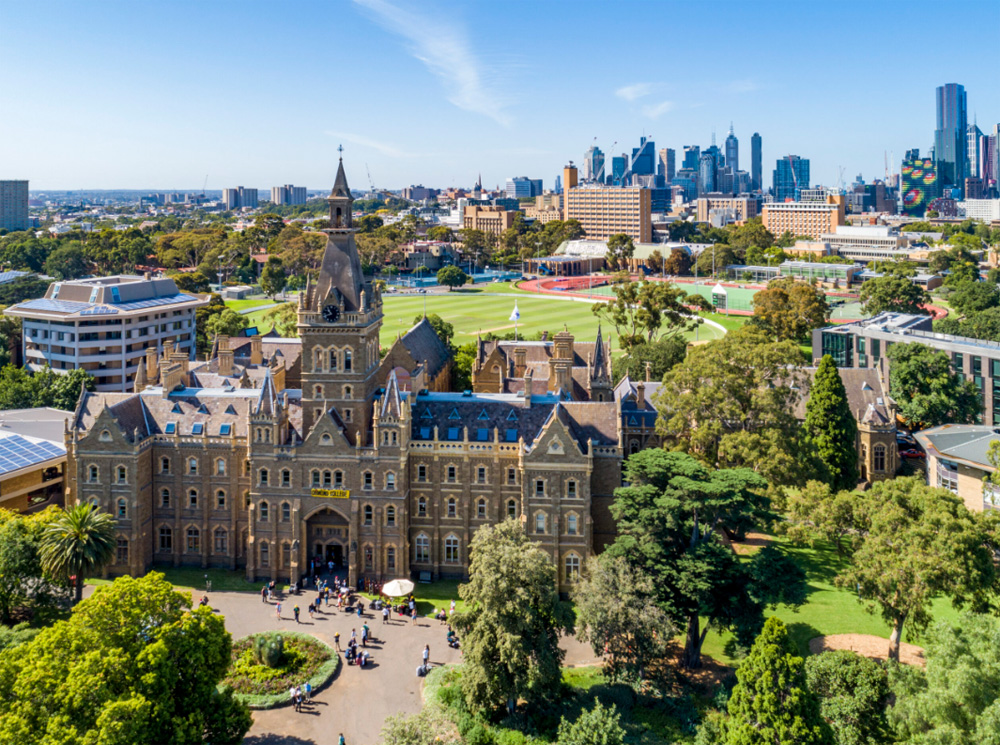
Victoria will reserve a quarter of its regional skilled work visas for international students who come to the state’s universities and TAFEs in a bid to lure them to our shores in the face of federal caps on placements.
Premier Jacinta Allan made the commitment on Wednesday while touring a Bharatiya Vidya Bhavan school in Delhi as she ramps up her efforts to market Victoria’s education sector to the world’s most populous nation.
Under the plan, the state government will commit to reserve at least 25 per cent of the Victorian places for the Skilled Work Regional Visa, also known as subclass 491, for graduates of local universities and TAFEs in the 2024-25 financial year.
The government estimates this would offer an inside running to at least 500 visas this year for international students.
Successful applicants must live and work in the regions to encourage more skilled workers to communities outside Melbourne and can apply for permanent residency after three years.
In the last financial year 365 international students nominated for the regional visa and the scheme aims to grow this number further, with minimum reserve places set in key skill shortage areas such as advanced manufacturing, social services, hospitality and tourism.
“International students are essential to Victoria’s vibrant, multicultural community,” Allan said.
“We are ensuring that when students complete their studies, they have every opportunity to live and work in regional Victoria, where their skills are most needed.
“We’re focused on providing pathways for international graduates to build their futures in regional areas, addressing workforce shortages while offering graduates the chance to contribute to our growing regional cities.”
Bharatiya Vidya Bhavan is an Indian educational trust founded in 1938 that operates more than 100 primary and secondary schools.
Allan spruiked Victoria’s education sector to the International Education and Skills Summit, one of the country’s largest events for the industry, at the India International Convention & Expo Centre.
“It is a great pleasure to be here in Delhi over the past three days, and I come with three big priorities, education, education and education,” she told the crowd.
“Victoria is Australia’s number one destination for international students and the number one destination for Indian international students, and we want to see more students studying in Melbourne and across Victoria, not less.
“I hope I can extend an invitation to all of you to visit Victoria soon. To the institutes that are here today [and] prospective students of the future, please bring your executives, bring your faculty, and come and see the possibilities.”
Allan also spruiked her plan to circumvent the Albanese government’s contentious international student caps, announcing a $5 million fund on Monday that would encourage Victorian universities and TAFEs to set up foreign campuses or offer dual-degrees in partnership with other institutions.
The Victorian government has repeatedly urged the Commonwealth to scrap their proposed caps, arguing it would put an unnecessary limit on economic growth.
There were more than 234,000 international students studying in Victoria in 2023, hailing from 170 countries.
After her address, the premier was approached by nuns from a local convent who said they had appreciated her speech.
Later on Wednesday, she was scheduled to attend a film screening showing off India’s multibillion-dollar Bollywood film industry.

Australia continues to be a top global study destination, with significant increases in students choosing to study there in recent years. However, international students may find it tougher to get a study visa to study in Australia. The Australian Government has capped international student enrollments from 2025.
On 27 August 2024, the Australian Government introduced a National Planning Level (NPL) cap to limit the annual growth of international student programs. National Planning Level limits will apply from January 1, 2025, with a total of 270,000 new international student commencements for the 2025 calendar year.
It is the actual number of international students starting a course. If a student starts a second course at the same provider, also in calendar year 2025, it will not be counted under that year’s planning limit. The changes will not impact the current international students.
Rahul Subramaniam, Co-founder, Athena Education says, “Competition for the limited spots will be intense, as demand is expected to remain high despite the cap. This may lead to more stringent admission criteria and lower acceptance rates. The increased competition and limited availability of places may force some students to reconsider their study abroad plans or explore alternative destinations.”
From 1 January 2025, new commencements will be divided between Higher Education and Vocational Education and Training (VET):
“Universities with a high proportion of international students, such as the Group of Eight (Go8) institutions, will face larger reductions in their international student intakes. For example, the University of Melbourne and the University of Sydney will see a 7% cut, while the Australian National University and the University of New South Wales will face 14–14.5% reductions,” adds Subramaniam.
Before announcing the National Planning Level cap limit for international students, Australian Government’s Migration Strategy was released on December 11, 2023.
Genuine student requirement
The Genuine Student (GS) requirement was introduced on 23 March 2024, requiring specific questions in student visa applications to assess genuine student status and ensure safe, supported study experiences in Australia.
English language requirements
On 23 March 2024, the English language requirements for Student and Temporary Graduate visas changed.
Student Visas: The minimum test score for a Student visa has increased from International English Language Testing System (IELTS) 5.5 to 6.0 (or its equivalent).
The minimum test score for students undertaking an English Language Intensive Course for Overseas Students (ELICOS) course before their main course of study has increased from IELTS 4.5 to 5.0 (or equivalent).
The minimum test score required for students undertaking university foundation or pathway programs that deliver reputable English language training is IELTS 5.5 (or equivalent).
Temporary Graduate visas (TGV): The test score required for a Temporary Graduate visa has increased from IELTS 6.0 to 6.5 (or equivalent), with a minimum score of 5.5 for each component of the test (reading, writing, speaking, and listening).
Further, the length of post-study work visas will also change. If you get work in a skilled job during your post-study work period, you may be eligible to apply for the new 4-year Skills in Demand visa. This visa provides a clearer pathway to permanent residency.
Meanwhile, Universities Australia is calling on the Albanese Government to revoke Ministerial Direction 107 in light of the significant effect it continues to have across the university sector.

A record number of runners flooded the streets of Sydney to tackle the city’s annual ‘Sydney Marathon’. Several new time records were set as tens of thousands pounded the Sydney streets to conquer the staggering 42.195km route! Sydney, NSW. September 2024

Australia has defeated England by 68 runs in the second ODI as Alex Carey top scored at Headingley! Leeds, England. September 2024

The ‘Cairns Amateurs Racing Carnival’ was three days of horse racing fun, fashion, glamour, food and entertainment built around a wonderful array of venues where you can watch the quality thoroughbred racing and gala events throughout the beautiful tropical city of Cairns, including a Fashion High Tea, President’s Welcome Cocktail Party and Gala Ball! Cairns, Queensland. September 2024

Racegoers enjoyed two days of quality outback racing, with fashions on the field, Fred Brophy’s Boxing Troupe, entertainment at the Birdsville Hotel, Fun Run, and the RFDS Gala Party! ‘Birdsville Races’. Birdsville, Queensland. September 2024

From the river to rooftops, parklands to theatres, Brisbane was a blaze of colour at this year’s ‘Brisbane Festival’! Brisbane, Queensland. September 2024

Featuring fantastic art installations, pop-up bars, arcade games and performances by local talent, the ‘Real Festival’ celebrated the landscape of the Nepean River transforming the riverside into a spectacular fusion of fun! Jamisontown, New South Wales. September 2024

There were five days of outback celebrations including warm outback hospitality, true blue aussie sports, outback ironman and ironwoman, century cycle challenge, live bands, bush poets breakfasts, roving artists and many kids events, at the ‘Outback Festival’! Winton, Queensland. September 2024
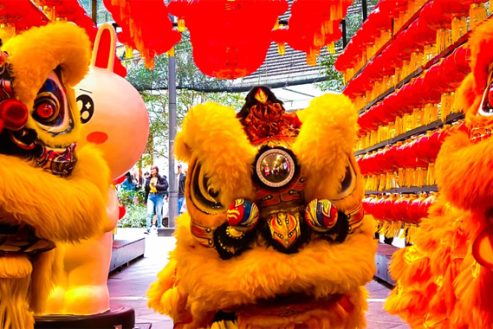
There were live performances, including traditional lion dances, captivating music, and mesmerising art demonstrations where one could sit back and relax immersed in the enchanting atmosphere with an outdoor cinema showcasing beloved Asian films! Sydney, NSW. September 2024

Little Nippers enjoying the warm spring weather while learning surf awareness! Maroubra Beach, NSW. September 2024
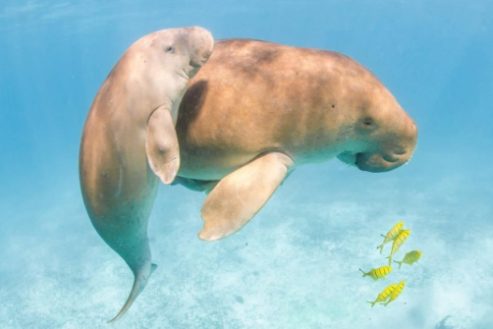
A mother dugong and her calf spotted! Coral Coast, Western Australia. September 2024

Cooling off in an amazing underwater cave! Limestone Coast, South Australia. September 2024

Dusk at the beautiful Ikara-Flinders Ranges National Park! Ikara-Flinders Ranges, South Australia. September 2024
This Bulletin and its contents is for general information purposes only and should not be used as a substitute for consultation with professional advisors.
As legislation and travel requirements are constantly changing, we strongly recommend obtaining advice on your individual situation from a Registered Migration Agent. Please click here to book a consultation with one of our Registered Australian Migration Agents, located in Australia.






You can manage your membership and billing method by clicking here
Terms of Service
Privacy Policy
Copyright © 2025 Office of Immigration Australia, a private company registered in Australia. All Rights Reserved.